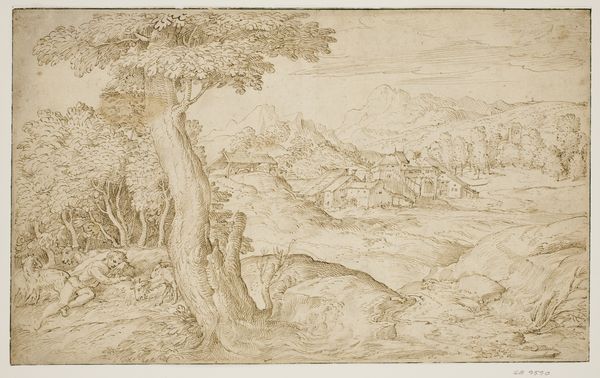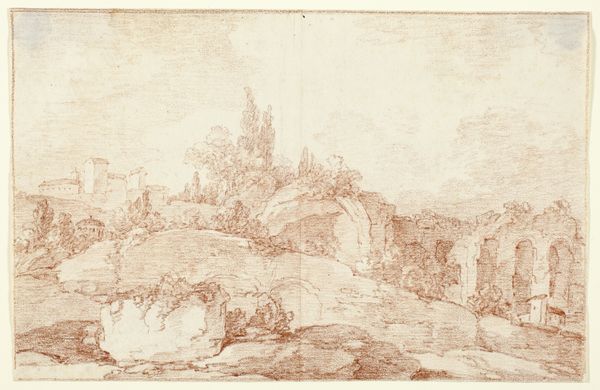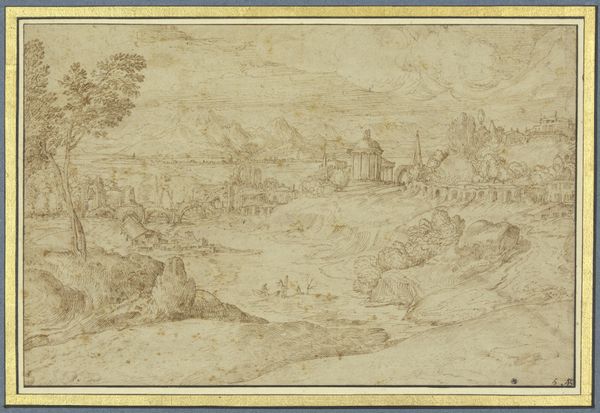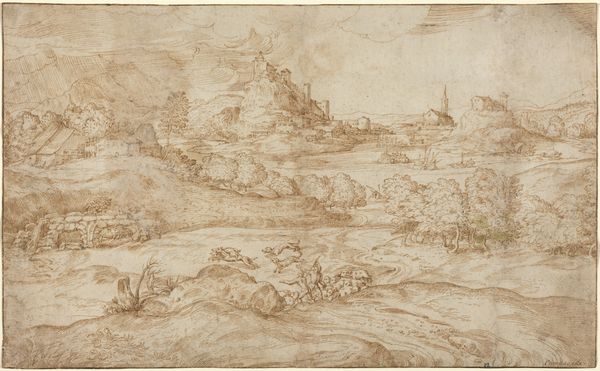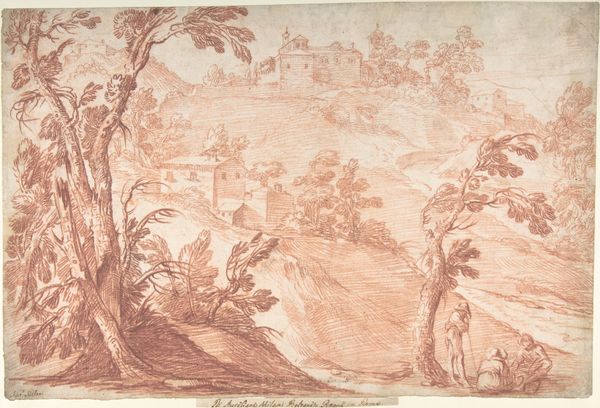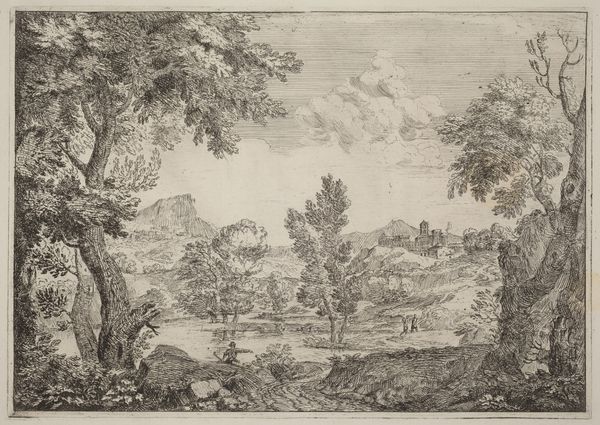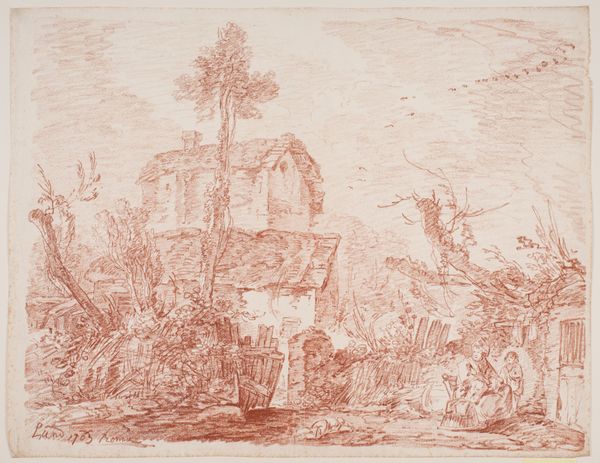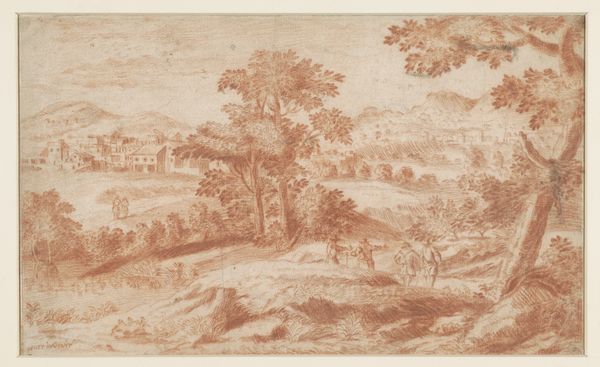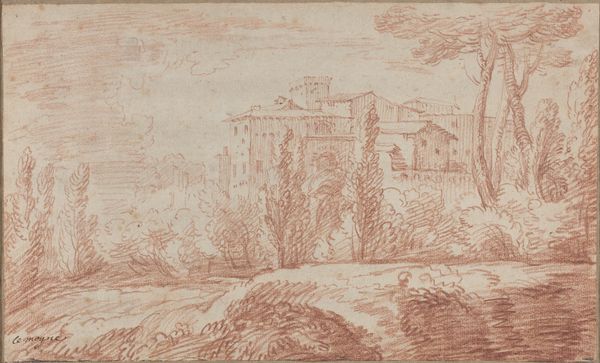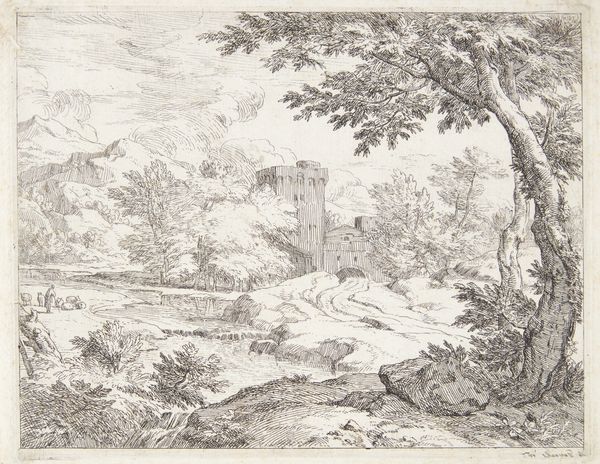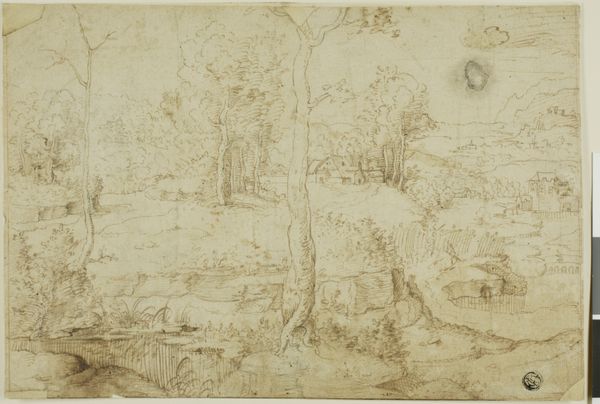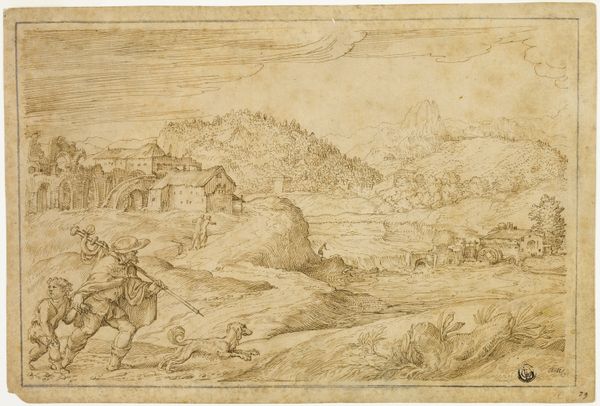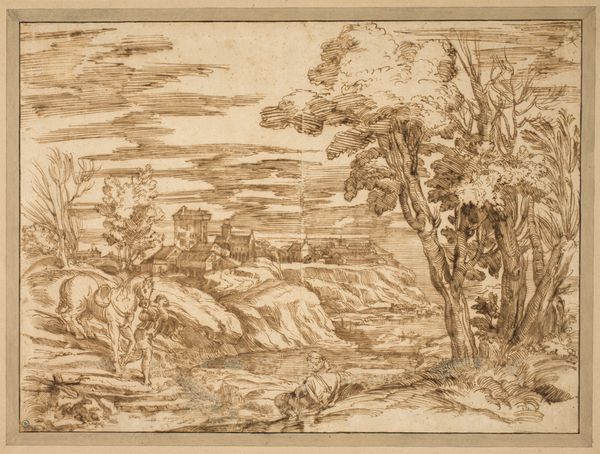
drawing, paper, ink
#
drawing
#
landscape
#
mannerism
#
paper
#
ink
Dimensions: Overall: 23.2 x 33.6 cm (9 1/8 x 13 1/4 in.) support: 33.1 x 42 cm (13 1/16 x 16 9/16 in.)
Copyright: National Gallery of Art: CC0 1.0
Editor: Bruegel the Elder’s ink drawing from 1553, "Landscape with the Penitence of Saint Jerome," really struck me. It's like a highly detailed tapestry but just in brown ink. What elements stand out to you, and how do you interpret this work? Curator: What immediately catches my attention is the tension between the religious subject matter and the dominating landscape. The figure of St. Jerome, usually central, is relegated to the lower left, almost consumed by nature. How do you think this choice reflects the artistic trends and social climate of the 16th century? Editor: I see what you mean! It makes you question, is it about Saint Jerome, or is it about the grandeur of nature overpowering religious dogma? Curator: Precisely. Consider how the Reformation challenged the Catholic Church's authority during this time. The rise of landscape as a genre decoupled from religious narratives reflects a changing worldview, placing greater emphasis on the natural world and individual experience. How might viewers, encountering art primarily within religious institutions, react to seeing this landscape celebrated for its own sake? Editor: So, it’s pushing the boundaries, subtly shifting the focus away from the Church's control of artistic expression. That's fascinating to think about. The scale and detail must have been incredibly impressive, making people consider things outside the accepted doctrines. Curator: Yes, Bruegel masterfully uses scale to suggest humanity's place within a much larger, intricate universe, prompting viewers to contemplate their connection to nature beyond established religious frameworks. Think of the socio-political ramifications: landscapes like this legitimized looking *away* from Rome for inspiration and value. What do you take away from understanding this tension? Editor: It completely reframes my perspective! I was initially drawn to the visual complexity, but understanding the historical context really unveils the subversive nature of the work. Curator: Exactly. By embedding subtle challenges to existing power structures, artists were key to societal progress, encouraging shifts in ideology through public art.
Comments
No comments
Be the first to comment and join the conversation on the ultimate creative platform.
